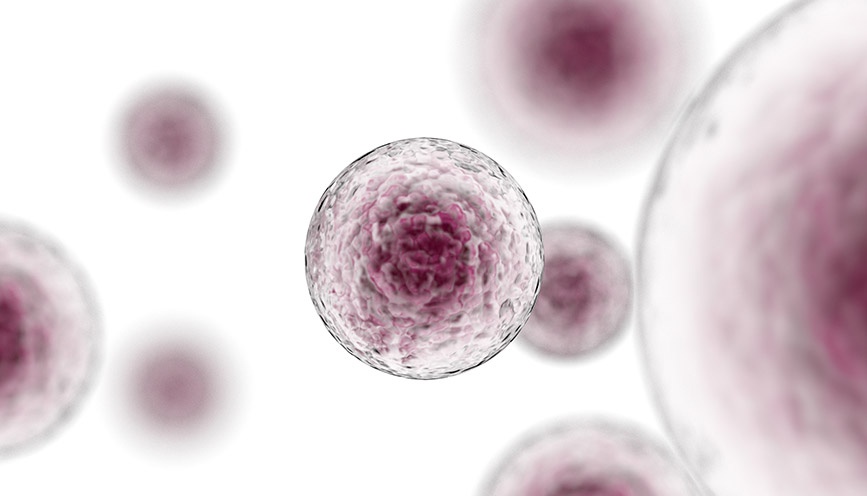Benefits of live-cell analysis for stem cell workflows

Censo Biotechnologies is a leader in the development of induced Pluripotent Stem Cells (iPSCs) and their differentiation into specific cell types for use in drug discovery. Censo provides a full spectrum of services to pharmaceutical companies, such as iPSC generation, genome editing, optimization of differentiation, and assay industrialization.
Daniel Tams is currently Senior Scientist and Neuroscience lead at Censo Biotechnologies, based in Cambridge. Daniel has spent the last four years at Censo developing differentiation protocols and assays for drug discovery. Prior to joining Censo, he undertook post-doctoral research at Leeds Institute of Cancer and Pathology, investigating the role of GSK3b inhibition in high grade glioma. Daniel holds a PhD in Stem Cells and Developmental Neuroscience and a BSc (hons) in Biomedical Sciences from the University of Durham.
Dan tells us more about using real-time live-cell analysis to steamline their differentiation protocol for neurological stem cells.
Q: What are the implications of your work with stem cells?
“We use [. . .] iPSC-derived cells in co-culture and tri-culture to provide novel insight into neurodegenerative disease. Using our in-house expertise, we have developed robust differentiation methods that provide almost pure populations of astrocytes, excitatory neurons, and microglia. We can use these pure populations to combine cell lines from healthy patients with cell lines containing gene mutations. [. . .] Using novel combinations of disease mutations in complex modelling, along with a range of functional neuronal readouts, we will be able to identify novel phenotypes and eventually targets for drug discovery.”
Q: What aspects of your workflow are important for the success of your stem cell experiments?
“At Censo [. . .], expansion and banking of our human iPSCs is always the first part of our work flow. [. . .] Often each cell line has a slightly different growth profile, and we have to understand this profile before we can commit to differentiation. [. . .] Differentiation can take from anywhere between 19 and 100 days, depending on the lineage and maturity required. [. . .] We are differentiating cells to excitatory neurons, astrocytes, and microglia for use in complex modeling of disease. [. . .] These models often take months to be fully mature and characterised. [. . .] Throughout this process of expansion and differentiation, we have multiple quality control check points, each with associated “Go, No Go” criteria. Having strict quality control criteria early in the workflow allows us to ensure our disease models are robust and that we limit loss of time and money.”

Q: What experiments did you design to optimize quality control early in your differentiation workflow?
“[In] co-culture of neurons and astrocytes [to] achieve robust functional activity in a microplate, we started from the basics and assessed a number of growth matrices and concentrations with the aim of limiting neuronal peeling [culture awareness], while maintaining a monolayer. [. . .] This was performed at the same time as assessing cell density, since peeling of neurons and cell density go hand-in-hand.
Secondly, we titrated the lentiviral calcium reporter (NeuroBurst) to identify the optimum MOI for transfecting our cell type. [. . .] Finally, we added astrocytes and microglia to these culture to assess how they influenced neuronal functional activity.
[. . .] Calcium Signalling [is now] a routine functional read out, [and so] we are now in a position to assess batches of neurons for functional activity prior to long-term culture or compound screening. [. . .] This has allowed us to compare multiple methods of neural differentiation and identify those that derive homogeneous functionally active neurons. Ultimately, [we have] optimized our work flow, since neurons that are not functionally active are not used in downstream assays.”

Q: How does live-cell imaging help with the quality control in your differentiation workflow?
“[. . .] Live cell imaging has allowed us to gain a greater biological insight on the growth and maturation of many of our cells types, both iPSC and neuronal.
Once we have differentiated the iPSCs to a cell type of choice, we begin to think about characterising the cell lines phenotypically and functionally. One example of this is the functional characterization of our iPSC-derived microglia using a live-cell imaging phagocytosis assay on the ArrayScan HTS [for a short-term understanding].
We do this using unfixed live-cell functional characterisation and cell surface profiling of each batch of microglia, this gives us confidence in the phenotype of the cells that we are producing to use in long-term complex disease modelling.
Without live cell imaging, we rely on a daily scoring system to grade and estimate confluence of each cell culture, [which] takes time. As we collect the data, we build a picture of the growth profile of the cell line and we can manipulate the split ratio and growth conditions to get the best culture for downstream differentiation. This works well, however operator differences in scoring and manipulation of the tissue culture vessel outside of the incubator make this a less than perfect system.”

